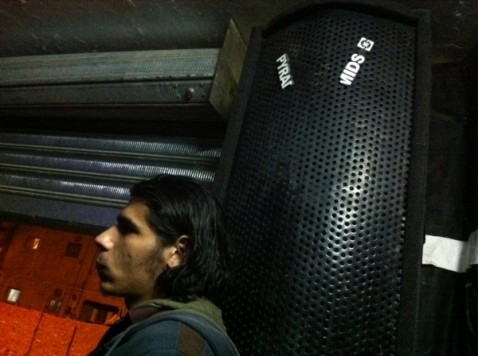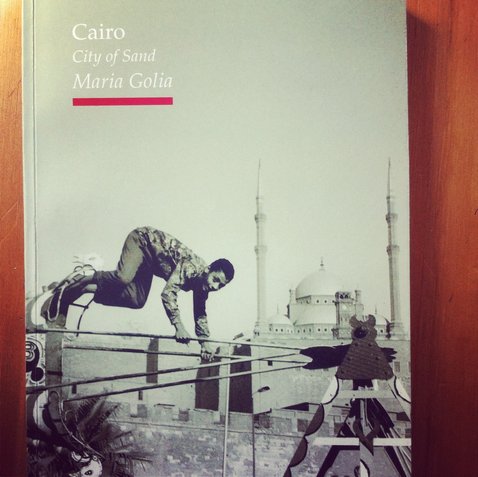 [kids and graffiti on Mhmd Mahmoud off of Tahrir Sq.]
[kids and graffiti on Mhmd Mahmoud off of Tahrir Sq.]
I just returned from a week in Cairo, Egypt. I only had one meal in a sit-down restaurant, a testament to my busyness and the plentiful (and late night) Cairo street food spots. For the record, Cairo is the only city I’ve ever seen with a 24-hour X-ray clinic — crowded at 2AM.
The closest I came to the pyramids was with Ahmed by this busted-up speaker stack — ‘Pyra Mids’! — out in a hastily constructed post-quake informal town called “City of Peace.”

Needless to say, there’s *a lot* going on in Egypt right now, whether you follow mainstream news or civic media visionaries Mosireen or have your ear to fresh developments in music or are interested in adapting 3-D printers and open source tech to African ends, like the good geeks of Cairo’s Hackerspace (their tongue-in-cheek motto: “Hack Like an Egyptian”).
For those looking from afar, I highly recommend a spirited, sharply observed book on contemporary Cairo. Maria Golia’s City of Sand. It’s exquisitely written, loving but unsentimental, trenchant as a result of intimacy, delivered from an expat who has lived in the city longer than most of the local musicians I met there have been alive.

Three excerpts:
Life at closer quarters in a traditional society means that family, extended family, as well as friends, colleagues, neighbors, building guardians (bawwabin) and local tradesmen become observers, and consequently arbiters, of each other’s lives. Depending on their motivation, interactions are clothed in degrees of intimacy, from the subtle to the intrusive. The Cairene talent for combing both approaches in a single phrase or gesture is inimitable; the contradiction resolves itself in the understanding that subtlety and intrusiveness are the qualities of the voyeur. Excluded by a paternalistic government from the duties and rights associated with civil society, denied a public life by martial law, the average Cairene enjoys the same freedoms and expectations as a juvenile delinquent in reform school. Looking at life from the outside in, peering through the chinks in the walls of autocracy, class distinction, poverty and illiteracy, the only participatory power that remains is interaction, even if it means just to watch.
+ + +
Cairenes, it must be said, are not fussy about appearances. Cars are unabashedly scraped, clothing is casual and just about everything is a magnet for the city’s dust, which is sticky and vaguely narcotic. As part of its unceasing efforts to spruce things up, the Cairo Sanitation and Beautification Authority dutifully sends forth a listless army of green-clad men. They push plastic wheelbarrows and homemade witches’ brooms fashioned from crooked sticks and the twigs of a species of palm. Trees, alas, are scarce, in many quarters. In some upscale parts of town, smaller-than-life plastic palms have been installed in patches of garden. At night, they oscillate hypnotically in red, yellow, orange neon. After 5,000 years of watering trees, it must be fun to just plug one in. Some might even call that progress.
+ + +
It is in places like Cairo that one may learn the most about what can go wrong, but also about what can stay right and the knowledge that may be acquired when people live peaceably in one place for a very long time. There are treasures to be culled from the enterprise of cities, some less apparent than others…
– Cairo, City of Sand, Maria Golia (2004)
 [Protestors pulling down stone barricade in front of Ministry of the Interior]
[Protestors pulling down stone barricade in front of Ministry of the Interior]
hey – ‘agile and reckless’ i like that.
ahmed tells me you enjoyed cairo.
thanks for the words/sounds
maria g.